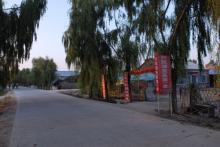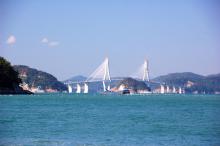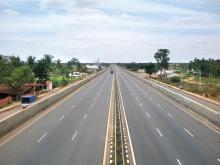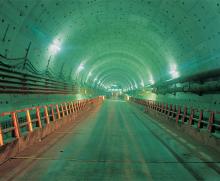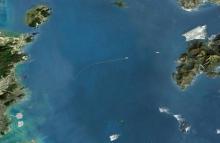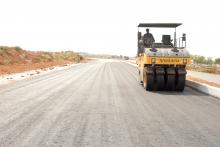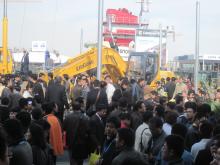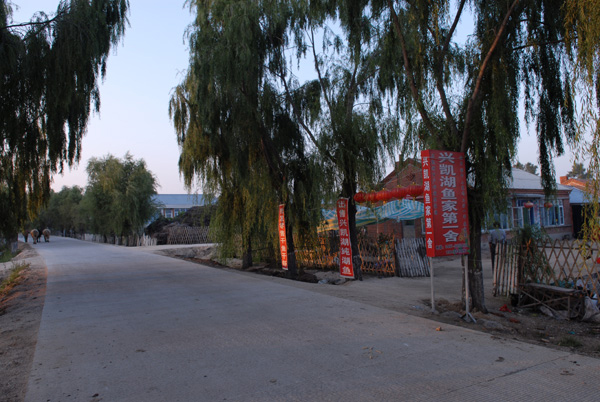
Investment in China and India continues unabated, but other nations on the continent are eager to attract companies as Patrick Smith reports
Asia is still booming despite the current economic crisis, and new infrastructure programmes are constantly coming on stream.Powerhouses China and India, with their double-digit growth figures and huge infrastructure plans (in scope and cost), are leading the way and are still magnets for businesses wishing to expand, both in terms of facilities and customers. But others are following suit, and this should come as no surprise in a region that is home to an estimated four billion people.
It is also a region that has attracted an increasing number of conferences and infrastructure exhibitions showing the products that are available to help build that infrastructure.
For example, Messe München International (MMI) has just completed a successful
MMI Asia (the Asian regional headquarter of MMI) launched ConBuild Indonesia 2011 to support and promote infrastructure growth for the rapidly-growing market in Indonesia, which is now the third largest emerging economy in Asia, after China and India.
“This is an opportune and exciting time to be in Indonesia to ride the wave of development in the construction, building and mining industries,” says Ronald Unterburger, managing director and CEO Asia Pacific of MMI Asia.
As shown in the recent forecasts released, Indonesia’s GDP (gross domestic product) compound annual real growth will be 5.8% between 2010 and 2015. In terms of scale, measured in industry value, Indonesia is also among the largest markets globally.
It is understood that the National Development and Planning Agency has launched a prospectus of 100 projects, with an estimated value of US$48.8 billion. The agency will tender out these projects under PPP (public-private partnership) schemes between 2010 and 2014. [Source: BusinessWire - Research and Markets in compiling its Indonesia Infrastructure Report Q3 2010 with independent forecasts and competitive intelligence on Indonesia's infrastructure industry].
BMI (
In one development, Indonesia's government is offering five key infrastructure projects to the
“The Indonesian market is certainly one that is fast growing in demand and a marketplace that continues to expand rapidly,” observes MMI, which also points to the enormous growth in Vietnam’s construction sector, fuelled by a massive programme of infrastructure development along with private sector investment both local and overseas.
This ensured that ConBuild Vietnam 2010, held in Hanoi, was the largest in the series to date with over 200 exhibitors from 20 countries, and it took place at a time when overseas manufacturers and service suppliers are taking a keen interest in the Vietnamese market, notes MMI.
According to figures released by the Vietnamese Ministry of Construction, the total production value of the country’s construction sector increased by more than 25% in the first seven months of this year, compared to last year’s figures.
The increase is seen as an inevitable result of the priority that the Government of Vietnam is giving to the upgrading of the nation’s roads, railways, seaports, electricity and water supplies, all essential as Vietnam develops and becomes a more prominent player in the global economy, says MMI.
The government has also been applying a series of incentives for investors and investment projects including tax preferences, preferences on land use, and giving preferential treatment to investors in industrial parks, export processing zones and hi-tech parks.
Infrastructure is providing the dynamic for growth, with $18.09 billion approved for the construction and development of the road system in the country.
Major projects for the capital Hanoi include the Hanoi Metro rail system, construction of which is due to start in 2011; a new terminal for Noi Bai International Airport; construction of a new US$3.1 billion ring road; Noi Bai-Nhat Tan Expressway and the Nhat Tan Bridge, and large projects to prevent flooding and improve Hanoi's environment.
Next year the groundbreaking ceremony for Vietnam’s $1.6 billion Ben Luc-Long Than Expressway will take place while in Ho Chi Minh City there are also numerous projects either underway or about to begin in the public transportation, energy supply and sanitation sectors, with the West-East Saigon Highway and a large-scale water environment improvement project being two of the largest.
Neighbouring China already knows the value of good transportation, and this was highlighted at the 2nd International Convention on Rural Roads (jointly organised by
It was reported that 94% of villages in China's eastern and central regions are today accessible by road, and the figure for villages in western regions is 98% (see report this issue).
Indeed, the rapid development of China’s transport infrastructure last year saw it add 4,719km to its motorway network in 2009.
The country’s success in the construction machinery market was also debated at a summit forum on the subject at Bauma China.
According to figures, in 2009, the market share of Chinese construction machinery occupied almost half of global constriction machinery market with over $46 billion in sales accounting for one-third of the global market. The sale revenues of four Chinese enterprises (
Indeed, Chinese construction equipment manufacturer LiuGong has started construction on two new factories in an expansion move that it says represents major investment into new production; signifies the company’s confidence in its growth plans, and enhances efforts to be a technological leader in the industry by producing advanced components in LiuGong factories.
The two plants, one in Changzhou, Jiangsu Province, eastern China, and the other situated at the LiuGong manufacturing campus in Liuzhou, represent a total investment of some ¥2.6 billion ($390 million).Korean tunnel contract
The tunnel, which will carry traffic at a depth of up to 48m below sea level to avoid large container ships, is part of a South Korean world-class project providing an 8.2km highway link between the City of Busan, South Korea's largest port city, and the island of Geoje, a tourist hot-spot and home to the country's biggest shipbuilding yards. The link is expected to open in late December.
The US$1.1 billion Busan-Geoje fixed link, aimed at reducing journey times considerably, comprises two major cable-stayed bridges with main spans of 230m and 475m respectively, and a 3.4km long immersed tunnel, designed for two-lane traffic in each direction.
Also in South Korea,
The two plants, one in Changzhou, Jiangsu Province, eastern China, and the other situated at the LiuGong manufacturing campus in Liuzhou, represent a total investment of some ¥2.6 billion (US$390 million).
A state-of-the-art hydraulic component manufacturing facility in the Liuzhou Yanghe Industrial Park will manufacture hydraulic components that “meet world-class standards for precision.” Production from the new facility will be destined for both domestic and overseas wheel loaders, excavators, cranes, forklifts, road machinery and bulldozers. It is part of LiuGong’s strategy to become a top ten equipment manufacturer globally.
The Changzhou excavator manufacturing and R&D facility at ¥1.5 billion ($225 million) represents the largest investment LiuGong has ever made outside its headquarters of Liuzhou, and products will serve both domestic and overseas markets.
In other moves,
The plant in China’s Jiangsu Province will be used to build mini excavators under 8tonnes and the new facility will form part of Caterpillar’s Building Construction Products (BCP) division. Caterpillar expects to begin producing mini excavators in Wujiang in 2012 and at present supplies Chinese customers with mini excavators produced at its facility in Xuzhou, China as well as with machines produced in Sagami, Japan.
Earlier this year,
And in the Philippines, the government is setting out a programme of private public partnership (PPP) projects, with new road infrastructure among the priority targets.
In all 83 priority infrastructure projects have been listed to be carried out under the PPP model and are worth a total of US$17.23 billion, with the first ten due to start during 2011. Projects starting in 2010 include a section of the CALA Expressway-Manila [the capital] and the NLEx-SLEx Link Expressway.
Construction work on a new highway connecting with the port of Manila, the NLEx-Harbor Link, is now being planned. The 8km highway extension is expected to cost nearly $185 million, and work will be handled by Manila North Tollways (MNTC).
To the west, India is continuing with its massive highway expansion (the world’s largest), and the government is keen to ramp up further construction of its highway network to meet up its own strict deadlines for expansion.
The National Highways Development Project (NHDP) calls for tough targets to be met on the distances being achieved/month. To meet the deadlines tenders have been awarded for 5,822km of road widening projects, while contracts for 17,922km of National Highway construction projects for the 2010/2011 financial year. The 23,744km of road projects being covered are under the Work Plan I and Work Plan II of NHDP.
Among other major projects is a plan to construct a new eight-lane expressway from Delhi to Uttarrakhand, which involves much more than building a road.
The proposed alignment follows the route of the Upper Ganga Canal, nearly 480km of canal originally built in the 1850s that provides irrigation for land across ten different districts.
The project, which will be developed under a PPP programme, will provide not only the new 147km expressway, but further link roads totalling over 50km, canal renovation and reclamation, hydro-electric power stations and 24 bridges to facilitate navigation, berthing and cargo facilities along the canal. It will also look at land development opportunities along the route and connect these to the expressway.
URS/Scott Wilson was appointed by the Uttar Pradesh Expressways and Industrial Development Authority to prepare a feasibility report to develop a financial model and provide a technically and financially viable solution that would not only incorporate all of the very different elements of the project but also address any environmental and social concerns.
Meanwhile,
Traffic volumes are heavy on the existing route between India’s capital and Agra, a heavily industrialised city as well as key stop on India’s tourist trail, being the home of the Taj Mahal.

